Hiroshima needs no presentation. It will always remind us of the complexity of choices in war.
The Hiroshima’s Peace Memorial Park was erected to commemorate the site of the world’s first use of a nuclear bomb.
And in fact: Everyone should visit it.
So if you’re planning your trip or just for curiosity, you’ll love this guide.
Let’s get started.
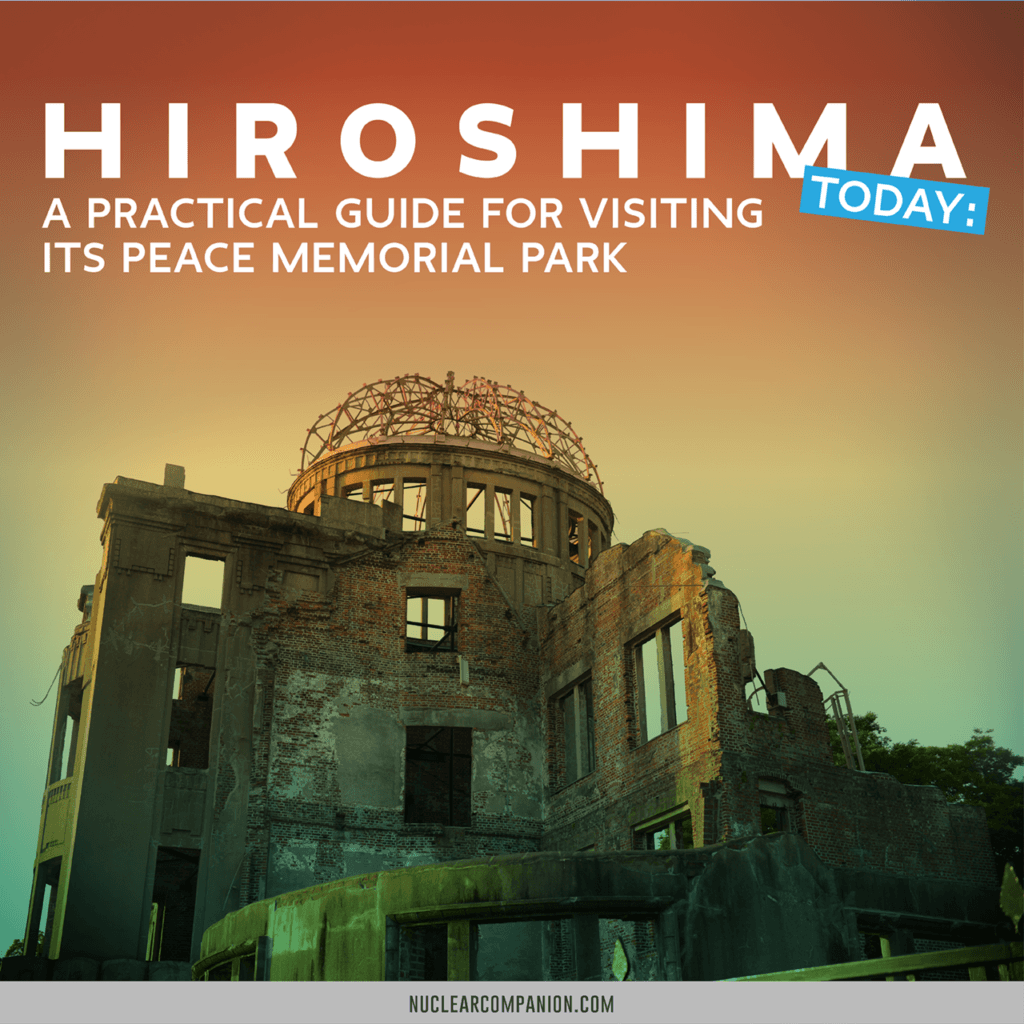
Hiroshima
(広島; Google Map)
The city of Hiroshima is undoubtedly known worldwide for its historical significance. However, with a population of over one million, Hiroshima has flourished into a thriving spot, plentiful with natural beauty and beautiful scenery to get away from the chaos. From parks to museums, Hiroshima can offer you the peace of mind you’ve been looking for, as well as serve as a powerful place in history.
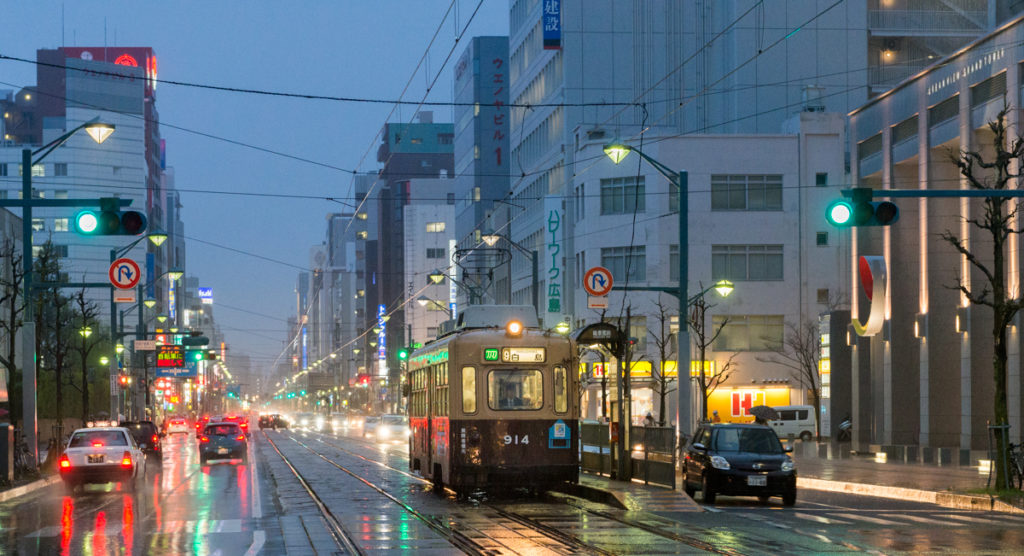
This Japanese city has regained its identity and no longer carries the stigma of being the first site of an atomic bomb attack. However, the people of Hiroshima still remember their fallen, even decades later. The town has tranquil winding rivers, rich green parks and a stunning Pond of Peace. Hiroshima focuses on displaying its history while still moving forward.
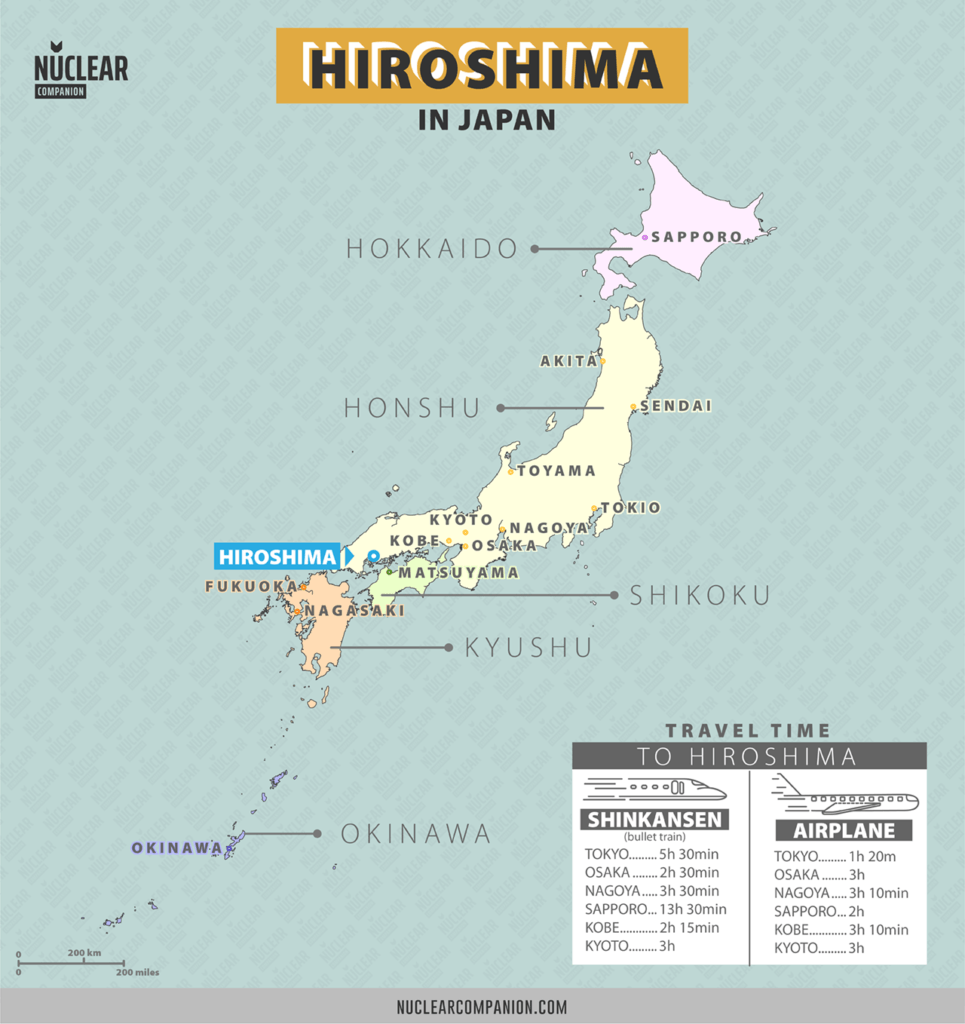
There are a plethora of museums, landmarks, and monuments that are sobering. Nevertheless, within Hiroshima itself, there is an overwhelming sense of harmony as you stroll around the city. The overall atmosphere of Hiroshima is laid back.
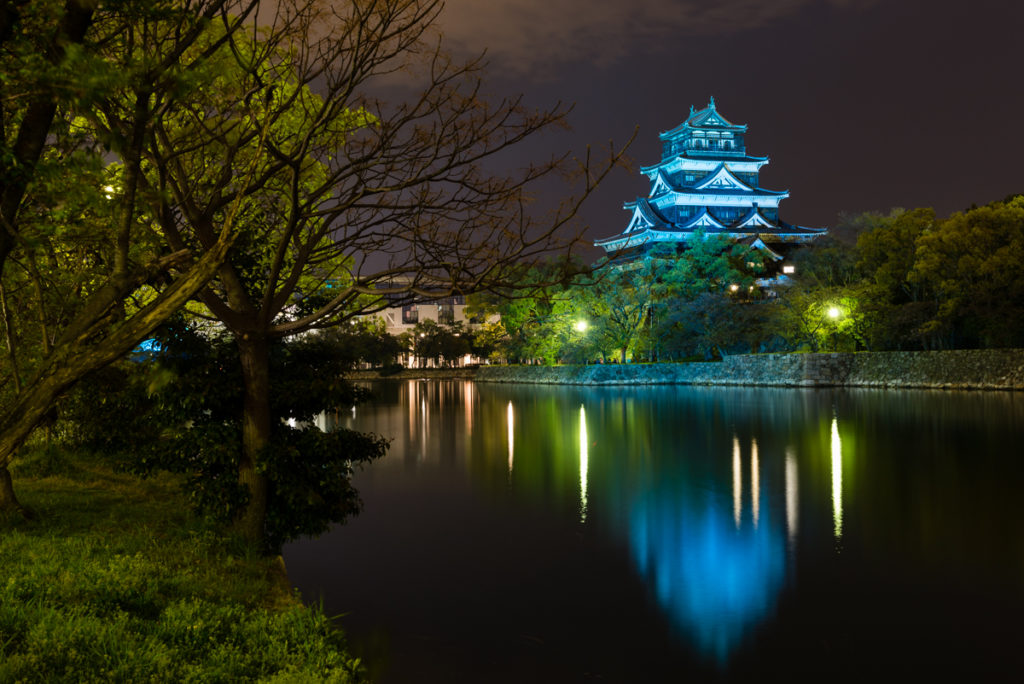
However, don’t expect this city to be completely quiet all of the time. It has a vibrant city life, bustling with people going to and from work. Hiroshima is known for manufacturing motor vehicles and ships; executives are going back and forth, tending to their businesses.
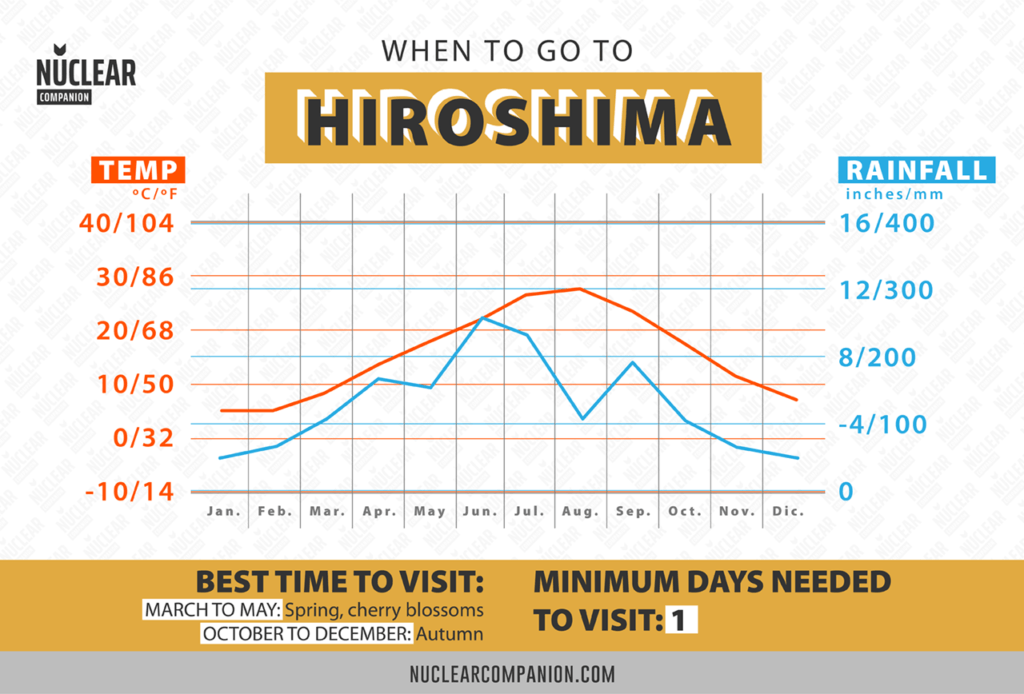
So if you’re into fun nightlife, Hiroshima has that going for you, too! The city has plenty of late-night attractions to whittle away the late hours with great food and even greater music. Dine in some of the finest restaurants or sneak into the local beer cafe for a drink or two; it’s an excellent way to help deal with the melancholy effects of the Peace Memorial Museum — Japan’s most thought-provoking museum.
Modern Hiroshima Photos
Interested in more beautiful modern Hiroshima pictures? Please visit the gallery from our friends from Picardo Photography (Hiroshima City Photographs).
Peace Memorial Park
(平和記念公園; Heiwa-kinen-kōen; Google map)
The Peace Memorial Park is at the very center of Hiroshima. It embodies several museums, parks, and buildings dedicated to the memory of the nuclear attack. At least one million people visit the site each year.
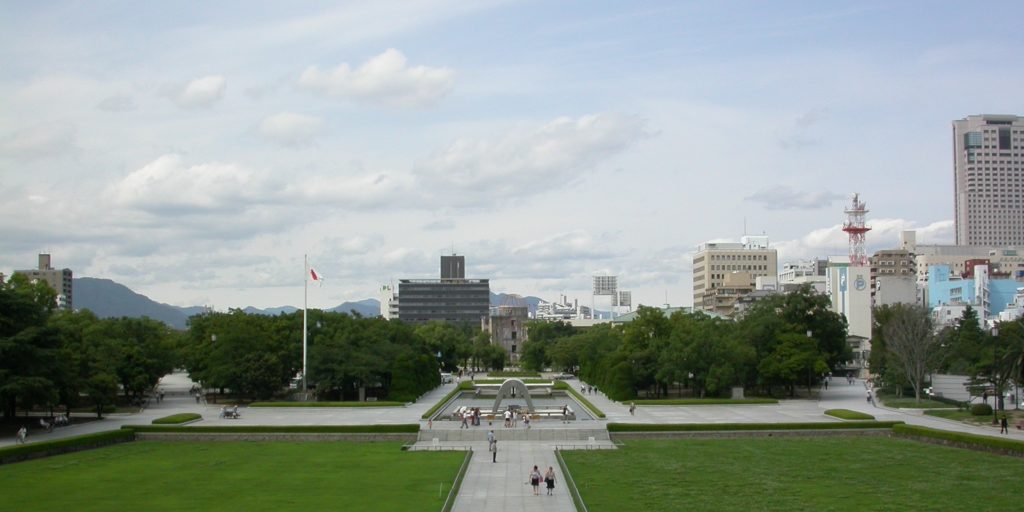
Each year, the annual Peace Memorial Ceremony is held at the park on August 6th. It spans 120,000 square meters and is a place of nature; a stark contrast with the rest of the surrounding bustling city.
This site was once the center of politics and commercial activities in the city, but the bombing changed everything. Instead of rebuilding the town center, the city decided to transform the area into a memorial.

It’s best to leave for the Peace Memorial Park early so that you can take in all of its sites. There’s a lot to see, and you don’t want to miss any. It takes two hours to get there by Shinkansen bullet train; factor this time into your day to ensure that you see everything.
The more popular attractions within the park are explained below including the Peace Memorial Museum, and others.
Top 10 Sights
1. Atomic Bomb Dome
(原爆ドーム, Genbaku Dome, Google Map)
This dome is a stark reminder of the devastation Hiroshima faced on that fateful day in 1945. Before the dome, there was once the Industrial Promotion Hall that stood in its place. The Czech artist Jan Letzel built the original building in 1915. He finished the structure on August 5th after one year of construction.

The Hiroshima site now serves as a reminder of exactly where the atomic bomb blew up. Everyone inside the building at the time perished; however, the structure of the Promotion Hall remained intact. The building was just a shell of its former self. The people of Japan decided to preserve it as a memorial to those who died on that day.

It’s definitely a jaw-dropping sight to see and is a firm reminder of the devastation that remains after such a horrible event.
2. Peace Bell
(平和の鐘, Google Map)
Dedicated: September 20th, 1964
This site is by the north entrance of the Peace Memorial Park. It was completed in 1964 by two metal-working artists. They created intricate etchings of lotus blossoms covering its body. The structure looks like an ordinary bell from the outside; however, you won’t be able to appreciate its true majesty until you stand underneath it.
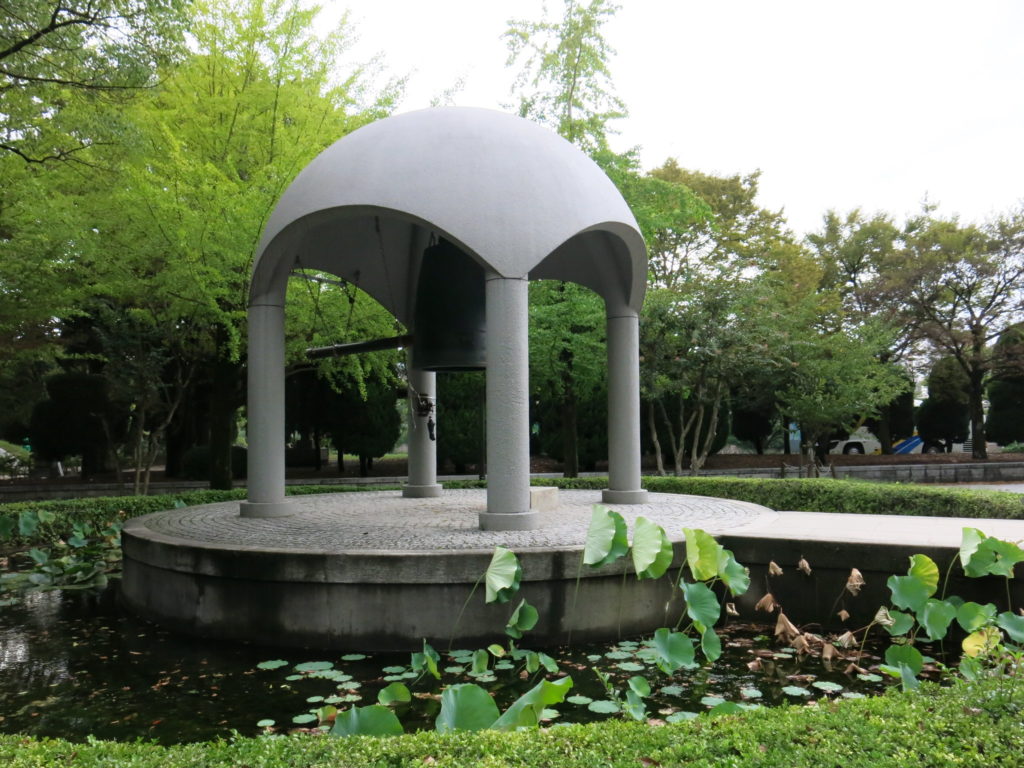
Inside of the bell is etched the atomic symbol of energy. This mark symbolizes the end to nuclear weapons as we strive for world peace. Feel free to grab the rope and give a tug to ring the bell. Once struck, the bell utters a haunting, broad note that you’ll feel throughout your body.
At the annual Hiroshima Peace Memorial Ceremony, you can hear the bell during the moment of silence. A representative of a bereaved family and a representative of children ring the bell together. It’s long, low note echoes around the park.
3. Atomic Bomb Memorial Mound
(原爆供養塔, Google Map)
Dedicated: August 5, 1955
This part of the site is dedicated to keeping the ashes of the tens of thousands of people who died from the bomb. The bodies of the deceased were unclaimed. It was either because they could not identify them or because their relatives were all deceased at the time.
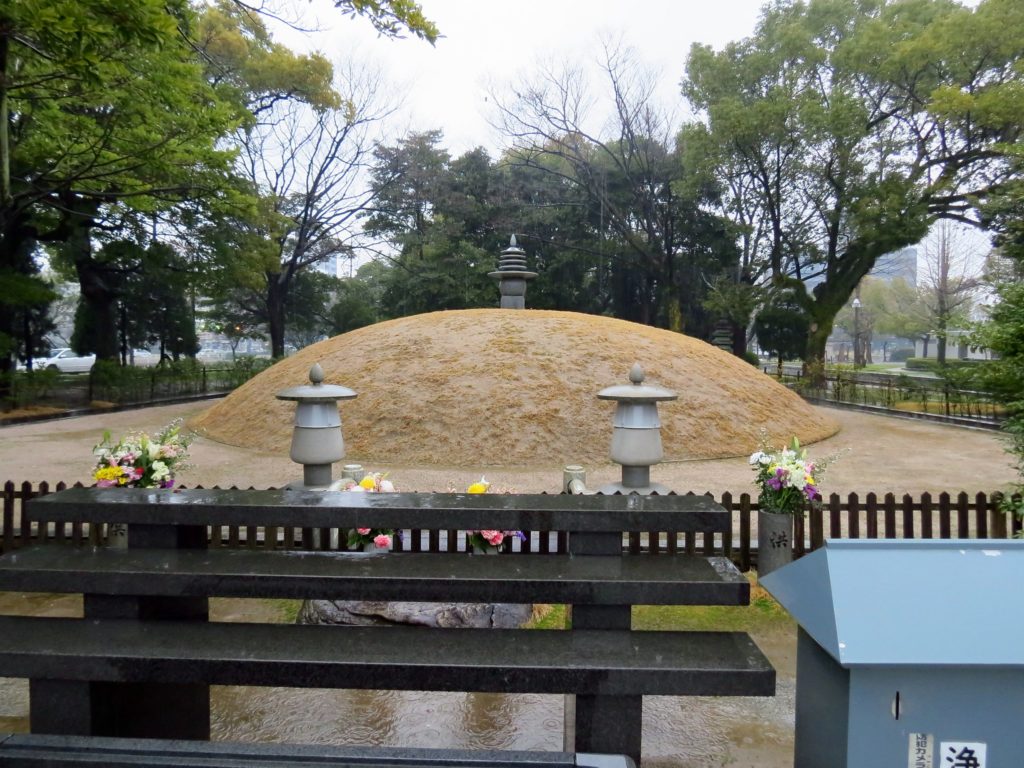
The corpses were gathered together and cremated on the spot. Construction of the memorial started through the donations of many people in 1946. Hiroshima City then took the project over in 1955 and rebuilt the vault. People brought other unclaimed urns of ashes to the memorial from the fateful day.
Within the mound are the ashes of roughly 70,000 victims. However, the city publishes a list of names every year in the hopes that their loved ones might claim them.
4. Children’s Peace Monument
(原爆の子の像, Google Map)
Dedicated: May 5th, 1958
Travel further into the park, and you’ll find this site. The main focus is a statue of a girl with outstretched hands. A crane is passing over her, which is a sign of longevity and happiness.
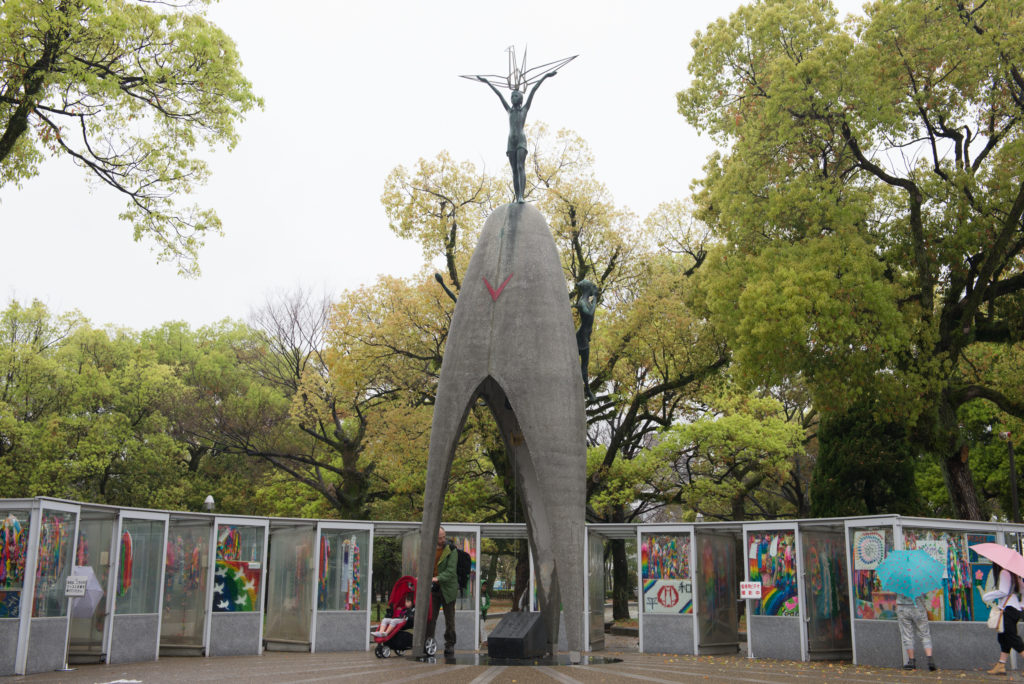
The figure comes from the story of a child victim, Sasaki Sadako. She was diagnosed with leukemia from the radiation of the atomic bomb. The little girl believed that if she made 1,000 paper cranes, she would get better. She eventually accomplished her goal but showed no signs of getting better.
So she started her next milestone of another 1,000 paper cranes. Unfortunately, she did not survive, but her story lives on as many children place paper cranes around her statue.
5. Flame of Peace
(平和の炎, Google Map)
Dedicated: August 1st, 1964
The Flame of Peace is a symbol of Japan’s eagerness to end the use of nuclear weapons. It was created in 1964 by Kenzo Tange, a professor of the University of Tokyo at the time. The structure is constructed to look like two hands pressed together, palms up towards the sky.
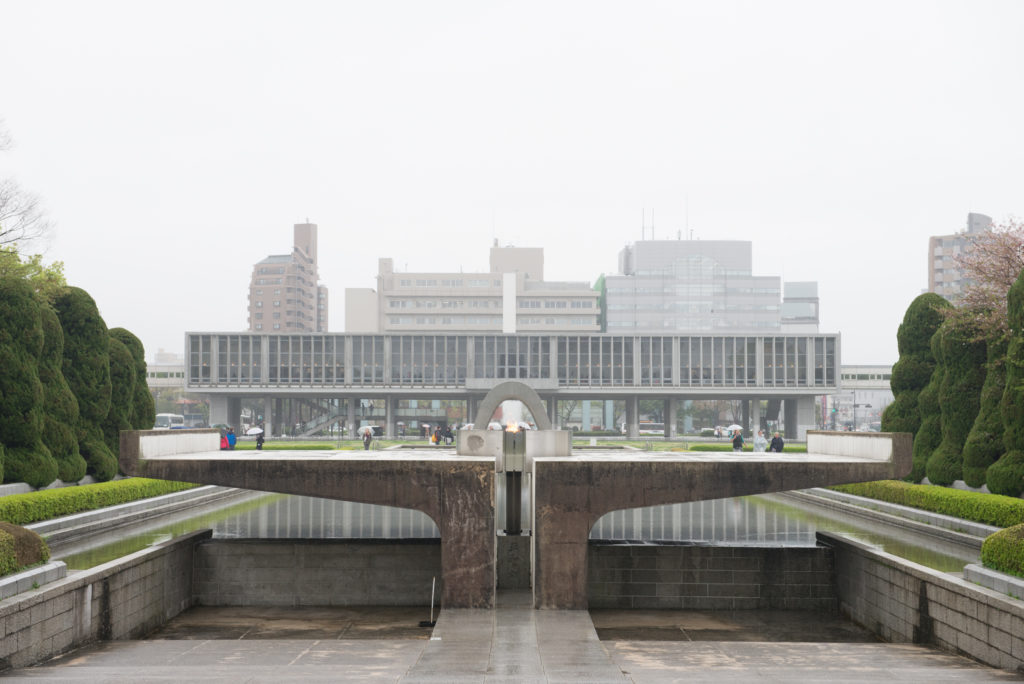
There, in the center, is a flame that has proceeded to burn since August 1, 1964. It will continue to do so until all atomic weapons in the world are eliminated. Only then will the flame go out.
Once a year, Hiroshima City holds the Flame of Peace Relay. People run through all the cities and towns, calling for the abolition of nuclear weapons. It has been used to light other flames as well, such as the sacred fire at the Asian Games in 1994.
6. Cenotaph
(原爆死没者慰霊碑; Google Map)
Dedicated: August 6, 1952
This structure is an inverted U that reflects the antiquated design of ancient Japan’s thatched-roof houses. Within the Cenotaph is a stone chest that contains the names of all the victims of the atomic bombing. It has the inscription “Sleep in peace; the error will not be repeated.”
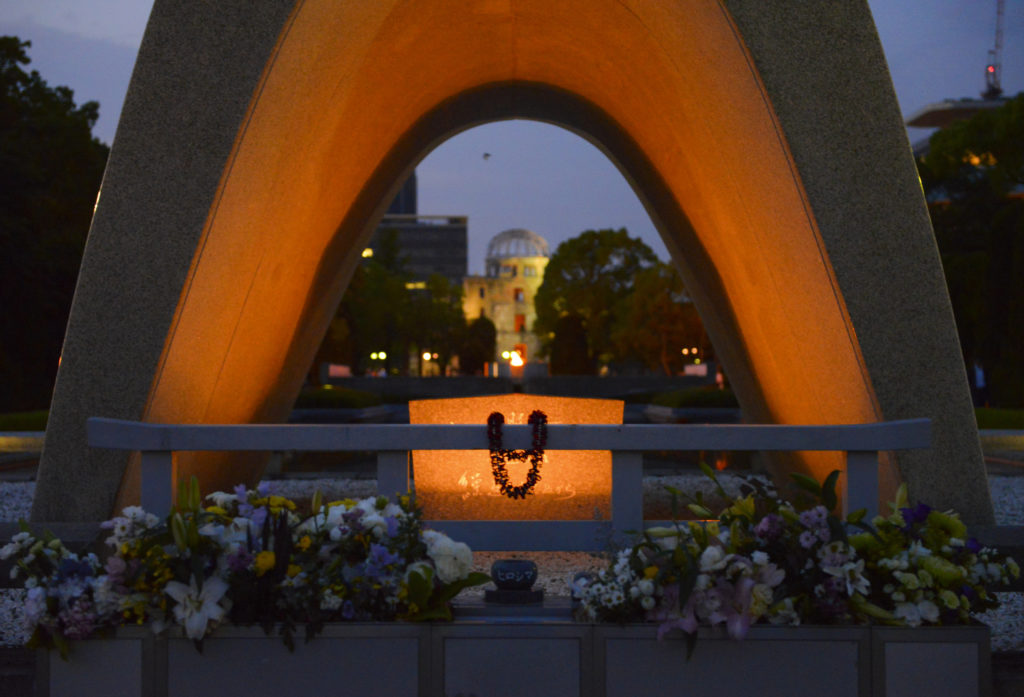
The placement of the site allows you can see both the Flame of Peace and the Atomic Dome. During the ceremony, wreaths cover the Cenotaph and everyone observes a moment of silence at 8:15 am; this time was the exact moment of the detonation.
Kenzo Tange also built the Cenotaph in 1952. It was meant to serve as a shelter for those who were unfortunate enough to be caught in the blast, as well as those who died from radiation poisoning years later.
7. Phoenix Trees
(被爆樹木アオギリ; Google Map)
This site of the park features trees that once stood tall and proud in the courtyard of the Hiroshima Post and Telecommunications Bureau. This tiny courtyard was located 1.3 kilometers from the hypocenter of the bomb’s detonation. Since there were no obstacles in the way to lessen the blow, they took the full force of the blast.
The lasting results meant the trees lost all of their branches and leaves. Moreover, the sides facing the explosion were left blackened and hollow. However, they continued to bloom the following spring. This action gives people a sense of hope that life can flourish after such an event.
They rebuilt the Chugoku Regional Postal Service Bureau, but in a different location. In 1973, the trees were transplanted to their new area. Each year they continue to put out blossoms and seeds. People give these beautiful plants as gifts to people all over the world.
8. Peace Memorial Museum
(被爆樹木アオギリ; Google Map)
Established: 1955
Visitors per year: 1.5 million
Opening Hour: Daily, Mar–Nov 8.30am–6pm, Aug 8.30am–7pm, Dec–Feb 8.30am–5pm
The main building of the museum contains powerful images of suffering after the bombing occurred. However, it is not the “hall of horrors” that you would expect. They simply have raw emotion that it would be difficult to exit the museum with a dry eye.
Such melted artifacts include a tricycle, a child’s lunchbox, and a watch stopped at 8:15 am. What’s most striking is the imprint of a shadow on the granite steps of the Sumitomo Bank building; these are the sole remains of the person who was sitting there when the bomb fell.
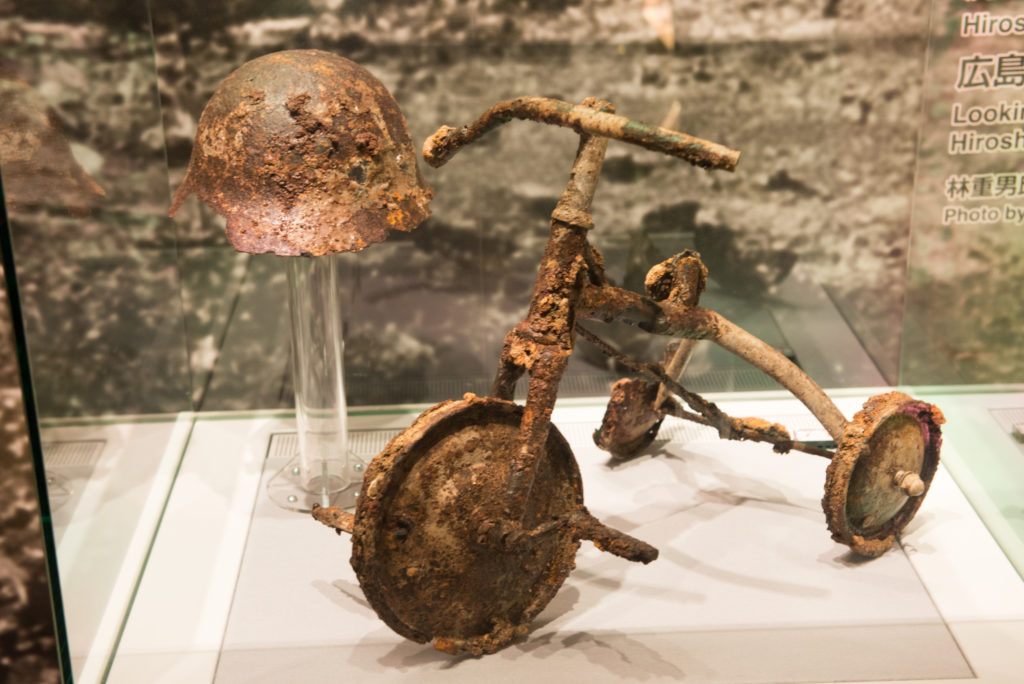
The east wing of the museum contains a history of Hiroshima itself, before and after the War. There are also screens displaying footage of the bomb dropping and the aftermath that followed.
The west wing is a record of the devastating effects of radiation poisoning. It includes images of burned skin, hair loss, cancer, and leukemia. It would be best to save this exhibit for the end so that you can reflect on the deep history.

This museum is open all year round, except December 30-31. It opens at 8:30 am but closes at various times of the year (ranging between 5 to 7 pm). From Hiroshima station, it’s a 15-minute ride by train. Alternatively, you can take any of the three bus lines that are operating in the area.
9. Peace Clock Tower
(平和の時計塔; Google Map)
Dedicated: October 28, 1967
Built in 1967, the tower comprises three pillars each twisted at 60 degrees. At the top is a spherical clock face three directions. It symbolizes the crossroads between life and death. The clock rings at 8:15 am every day to signify the change of Japan as a country. It is considered one of the “100 Soundscapes of Japan” that the people wish to preserve. The twisted arms of the tower represent hands raised in prayer so that another tragedy will never strike Japan again.
10. Monument in Memory of the Korean Victims of the A-Bomb
(原爆死没者慰霊碑; Google Map)
Dedicated: April 10, 1970, moved inside the park in July 1999
During the Second World War, approximately 100,000 Koreans were living in Hiroshima. Among them were soldiers and civilian employees of the army, students, and citizens. When the bomb dropped, 20,000 Koreans died in the devastation. Those 20,000 were amongst the 200,000 people who were killed in the bombing, making up 10% of the casualties.
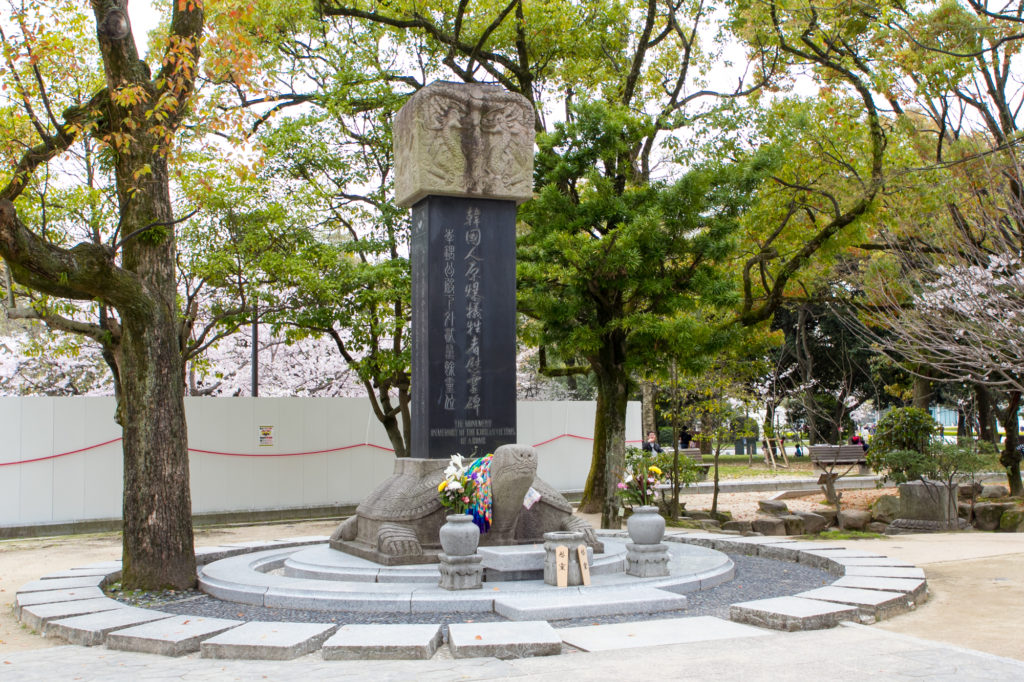
(Photo by Oren Rozen / CC BY-SA 4.0)
There were no funerals held for them, but the monument was created to help their spirits move on and rest in peace. These Koreans died on soil that was not their home, which made it an even bigger tragedy. A memorial service is held for the Korean victims of the War on August 5th every year.
Other Popular Sites
There are other favorite places to visit in the surrounding region that may be of interest to you. Each of these sites has a rich history of their own in relation to the atomic bomb. If you want to encompass the complete experience, it would be great if you had time to visit these places also!
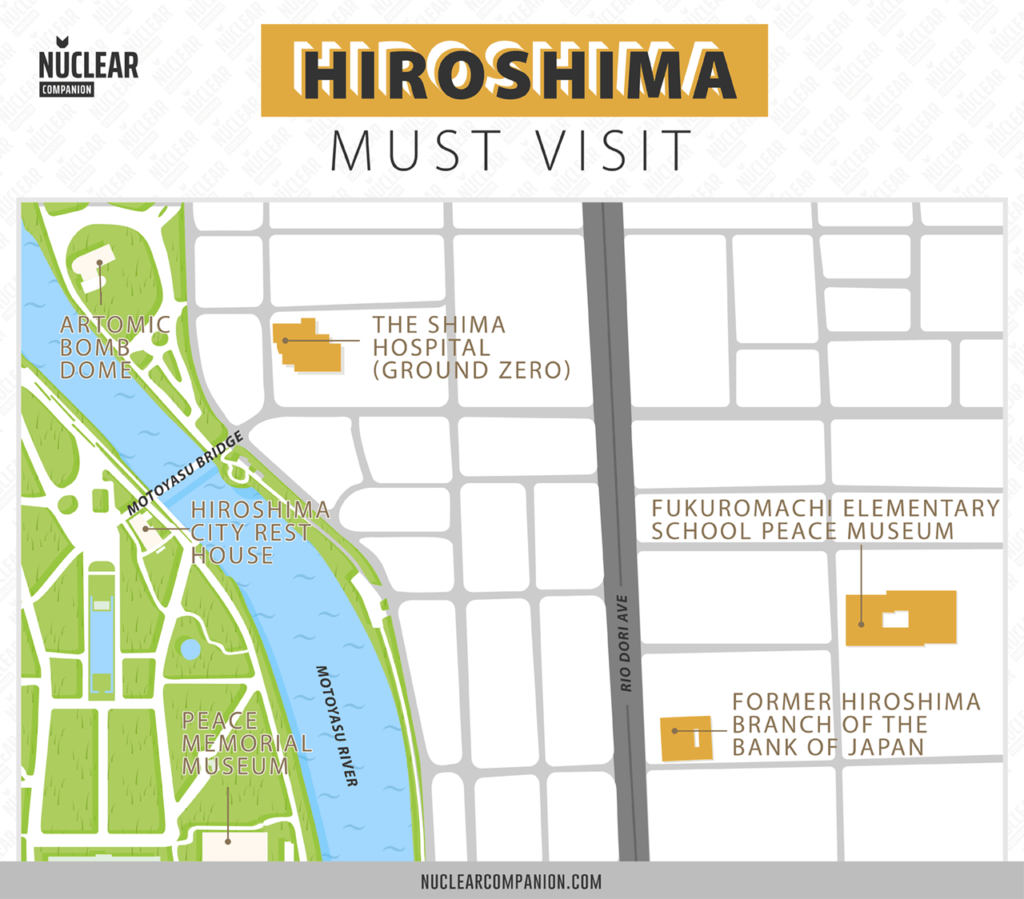
The Shima Hospital (Ground Zero)
(島外科内科;Shima geka naika;Google Map)
This site is considered to be ground zero of where the atomic bomb went off. It exploded 600 meters above the hospital and killed at least 80 people who were inside.
Dr. Kaoru Shima founded it after furthering his medical studies. He wanted to bring the standard of the Mayo Clinic to Japan after traveling to Europe and the United States. This development led to his clinic providing inexpensive treatment to patients while still offering a high standard of treatment.

(Photo by そらみみ / CC BY-SA 4.0)
Dr. Shima and one of his nurses were away from Hiroshima when the bomb exploded. Therefore, they were the only survivors of the hospital’s medical staff.
He returned the same night on August 6th to treat those who were injured; the doctor found a single surgical tool he’d purchased in America amongst the rubble. This coincidence was a strike to his psyche, given how he’d practiced American medical care within his hospital. This notion left him very conflicted.
In 1948, they rebuilt the hospital. Dr. Shima’s son and grandson would both become doctors and directors there.
Fukuromachi Elementary School Peace Museum
(袋町小学校平和資料館;Fukuromachi shōgakkō heiwa shiryōkan;Google Map)
Opening Hour : 9:00 a.m. – 5:00 p.m.
TThis Japanese museum was once an elementary school before the bomb. Most of the students and teachers inside (about 160) were killed, except for three.
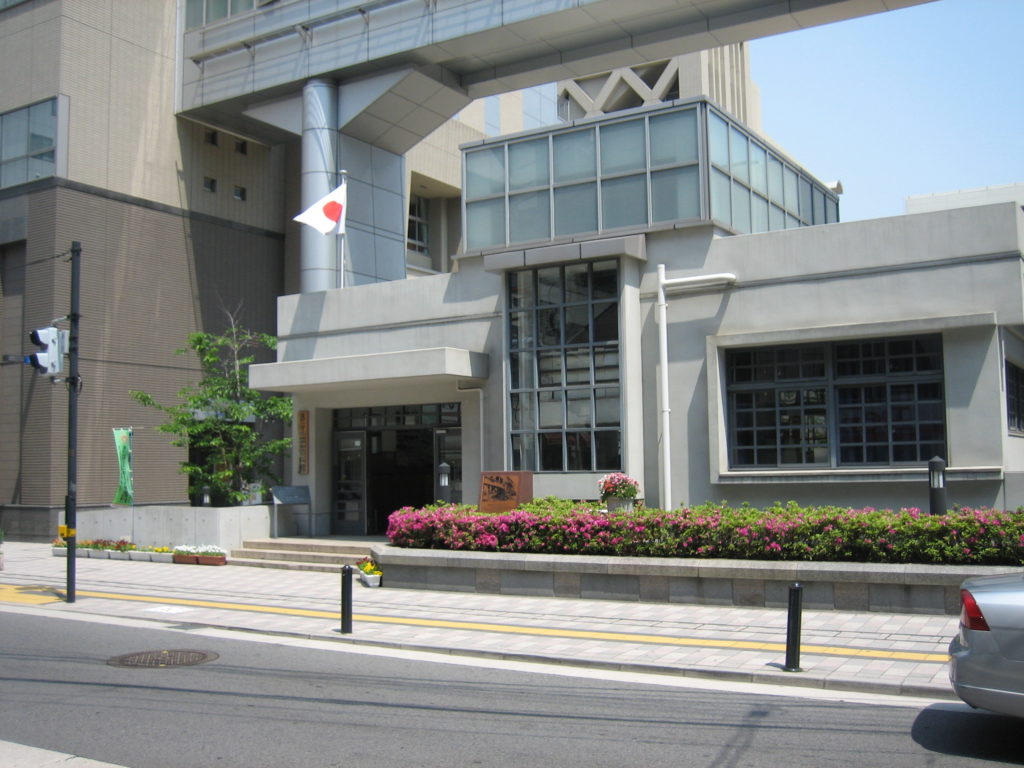
(Photo by Kiyokun / public domain)
It was one of the few buildings that were still standing after the bomb; thus, it was used as a temporary medical and help center. Along one of the walls is a blackened sectioned covered in messages that were left by parents looking for their children after the explosion.
There are informative displays written in both Japanese and English. There is a short video presented in the basement that is worth watching, called “Please Tell Me.” You can look at a variety of damaged objects that date back to the time of the explosion.
Hiroshima City Rest House
(広島市レストハウス;Hiroshima-shi resutohausu; Google Map)
Distance from ground zero: 170 meters
This location was once a kimono shop. Now the ground floor of the building is an information center, gift shop, and rest area.
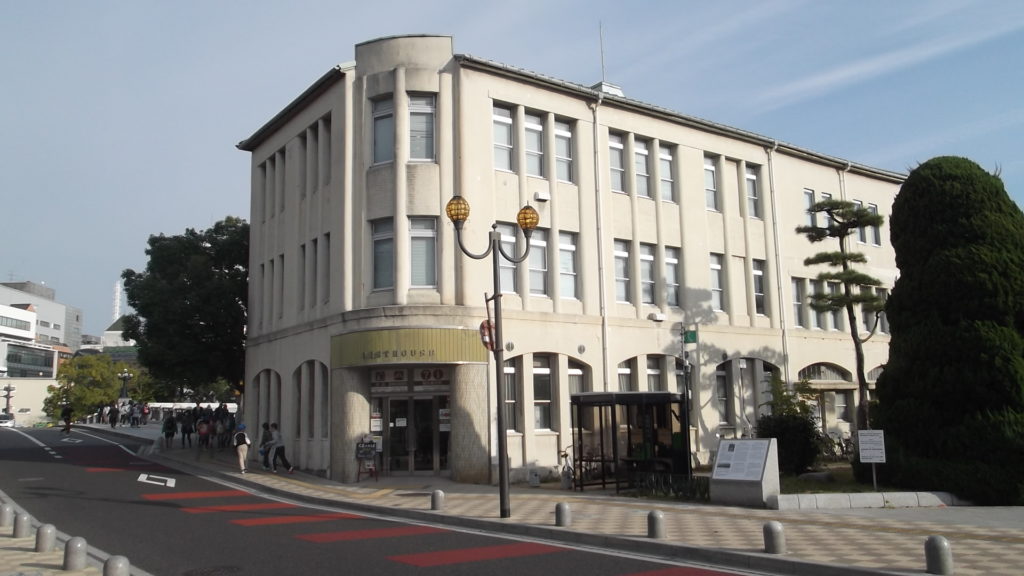
(Photo by 長岡外史 / CC BY-SA 3.0)
If you make a booking beforehand, you’ll be given access to see the basement; its preservation dates back to the bombing. This specific location is where the only person within the perimeter of the blast survived.
Former Hiroshima Branch of the Bank of Japan
(旧日本銀行広島支店;Kyū Nipponginkō Hiroshima shiten; Google Map)
Distance from ground zero: 380 meters
Opening Hour: 10:00 a.m. – 5:00 p.m.
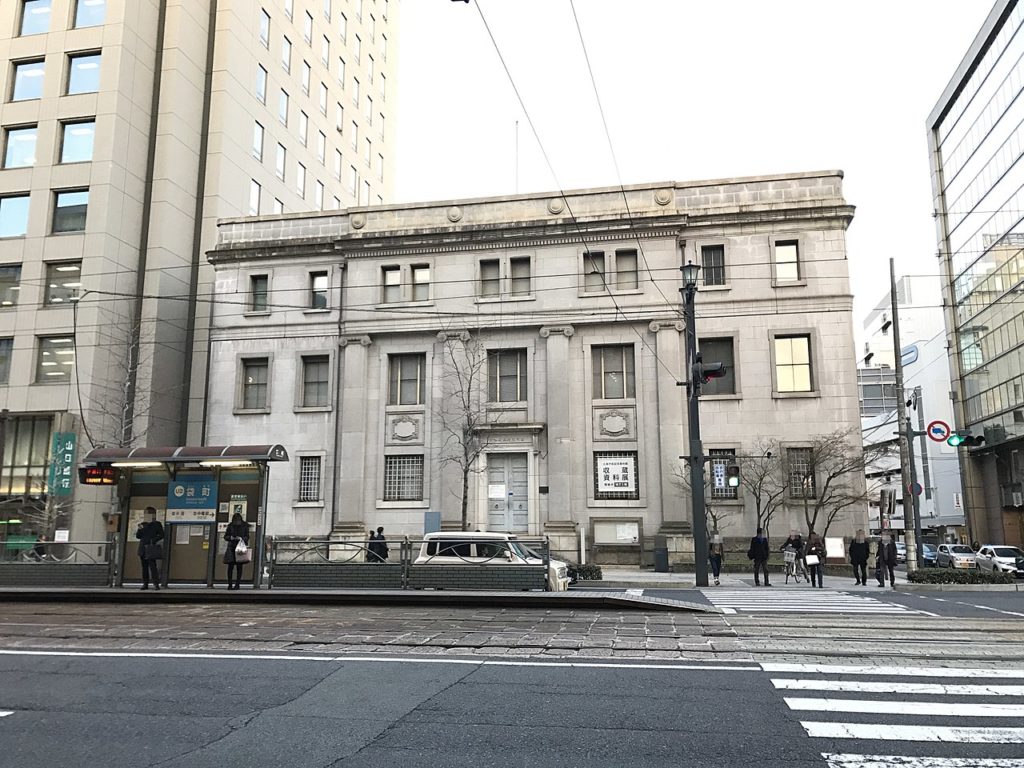
It is not the most famous building in Hiroshima. But it is the most well-preserved of the buildings that survived the bomb.
Being a steel-reinforced structure let it survive the blast. It looks today the same as it did that fatidical August 6th. But all 54 people at work inside lost their lives.
It reopened 2 days after the bombing and continued as a bank until 1992. Shortly, the Bank of Japan donated it to the city which since the year 2000 uses it as a cultural center.
Conclusion
Thank you for “traveling” with us and seeing what Hiroshima has to offer for tourists just like you. We can almost guarantee you will enjoy these sites. Hiroshima and the surrounding cities of Japan have a lot to offer for all everyone. Enrich your history with the epic tour of the Peace Memorial Museum. You’ll adore the tranquil walks along the Pond of Peace.
Is there anything you’d like to share with us? Please share your comments or stories of Hiroshima with us in the comments section below. We’d love to hear from you! Please feel free to ask questions, too. Thanks!
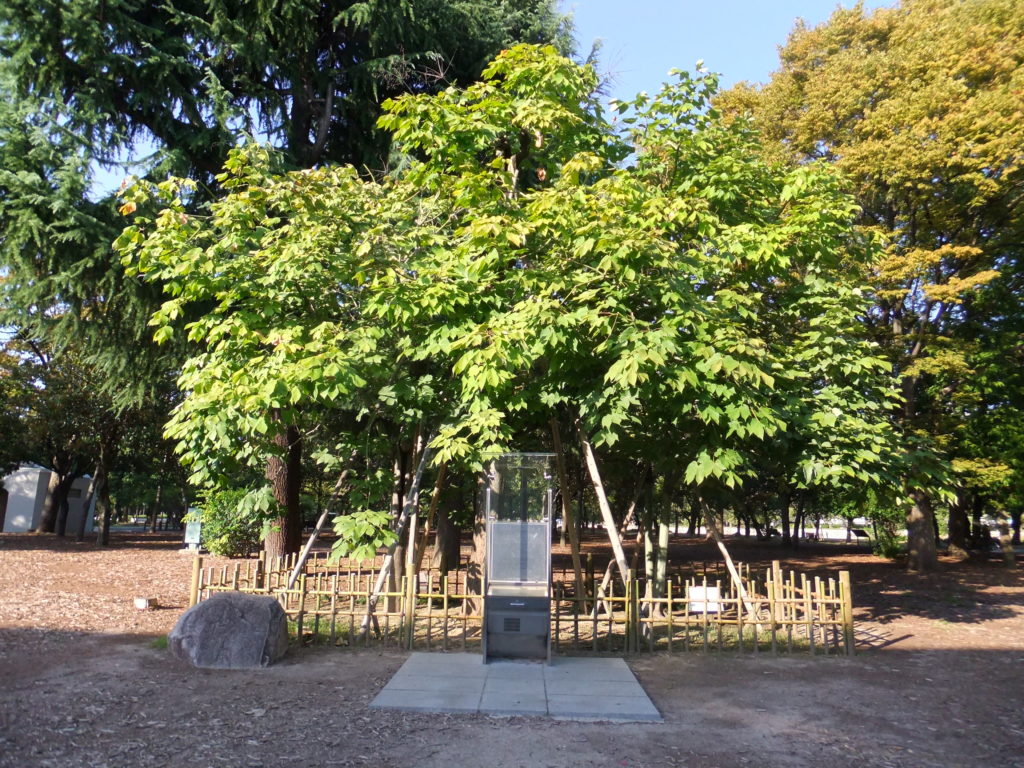
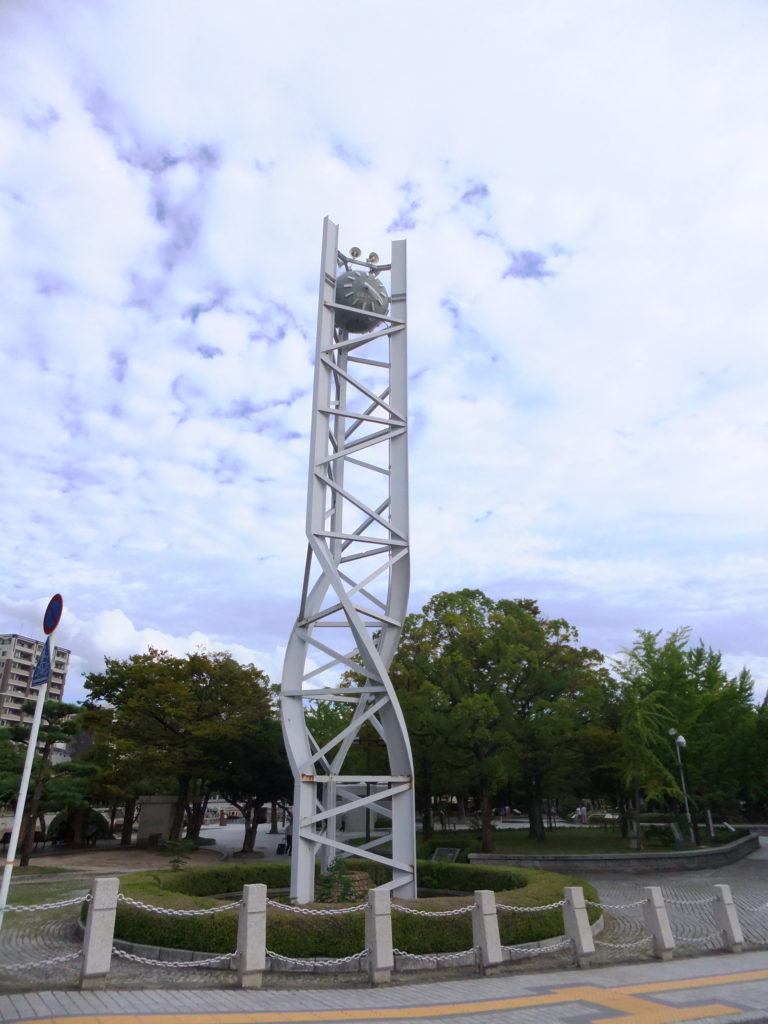
Thank you very much for enlightenment. I am a Hibakusha. I was born six month after the Bomb. I was 12 weeks along inside of my mother’s womb when the Bomb was dropped on Hiroshima, Japan on Aug. 6, 1945. We were 800 meters from the Hypocenter. We all survived. My older brother was 16 months old at the time of explosion. He passed away in October 1945 with a radiation sickness. I am going tone 76 years old next March 1, 2022. My sister and I accompanied President Obama to Hiroshima visit in Aug., 2016. I think you have done a wonderful job in telling the rest of the world that Hiroshima recovered very well however we should never forget what happed on August 6, 1945. We need to continued to push for disarming our Nuclear Weapons. Thank you, again.
Toshiharu Kano
The Youngest Survivor within a half mile from the hypocenter.
Thanks Toshiharu for sharing. It is a honor that you tell your story here. As you said, we should never forget. Pasts evetns should be preserved and revisited so we dont make the same mistakes.
Thank you for this. I will visit Kyoto in February next year (2024) and plan on making a trip to the Peace memorial Park. Eversince I was a little boy I have always felt the horror of this event. I hope to offer my respect and condolences upon my visit.